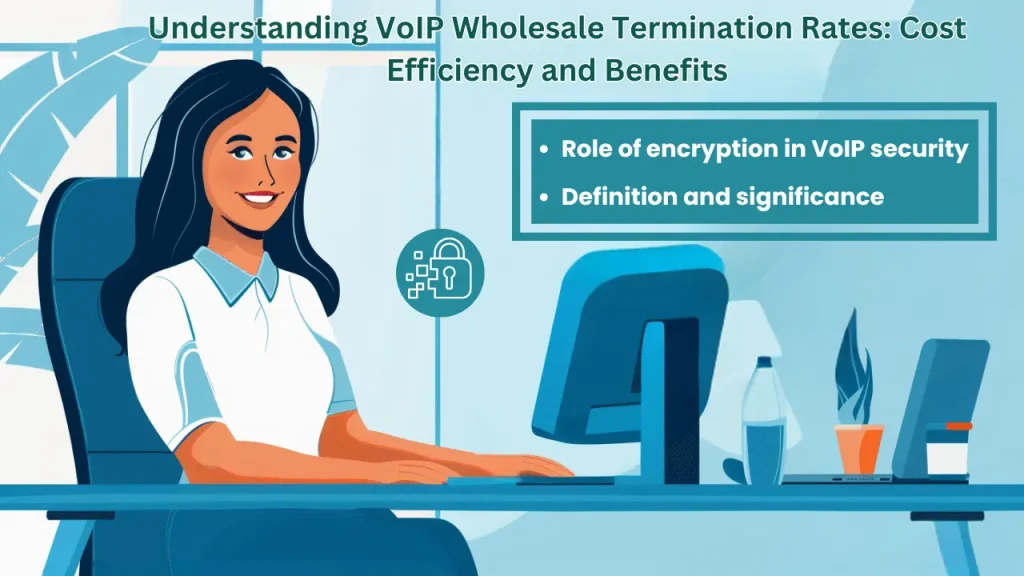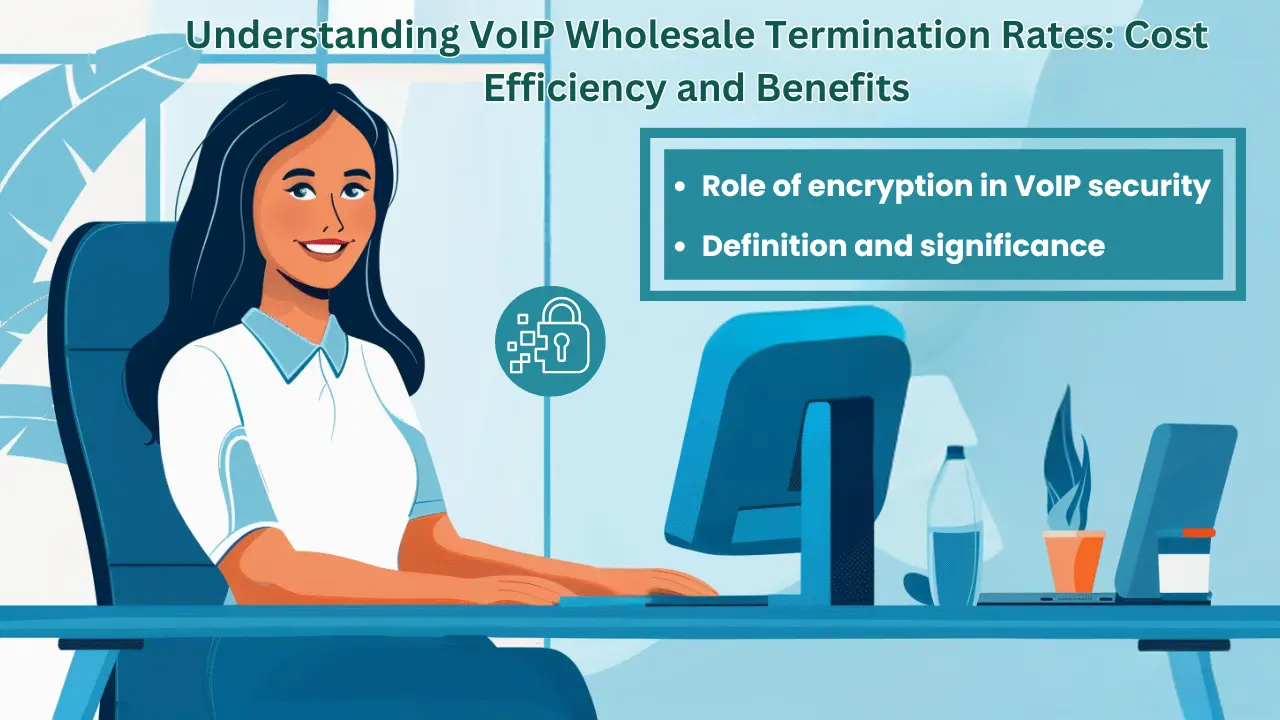
Key Takeaways:
- Wholesale VoIP rates offer competitive pricing and scalable solutions for businesses looking to optimize communication costs.
- Understanding the impact of geographic destination and call quality is crucial in determining the best rates for your VoIP termination needs.
- Choosing the right VoIP termination provider can provide significant advantages, including better security, reliable customer support, and flexible pricing structures.
Understanding Wholesale VoIP Termination Rates
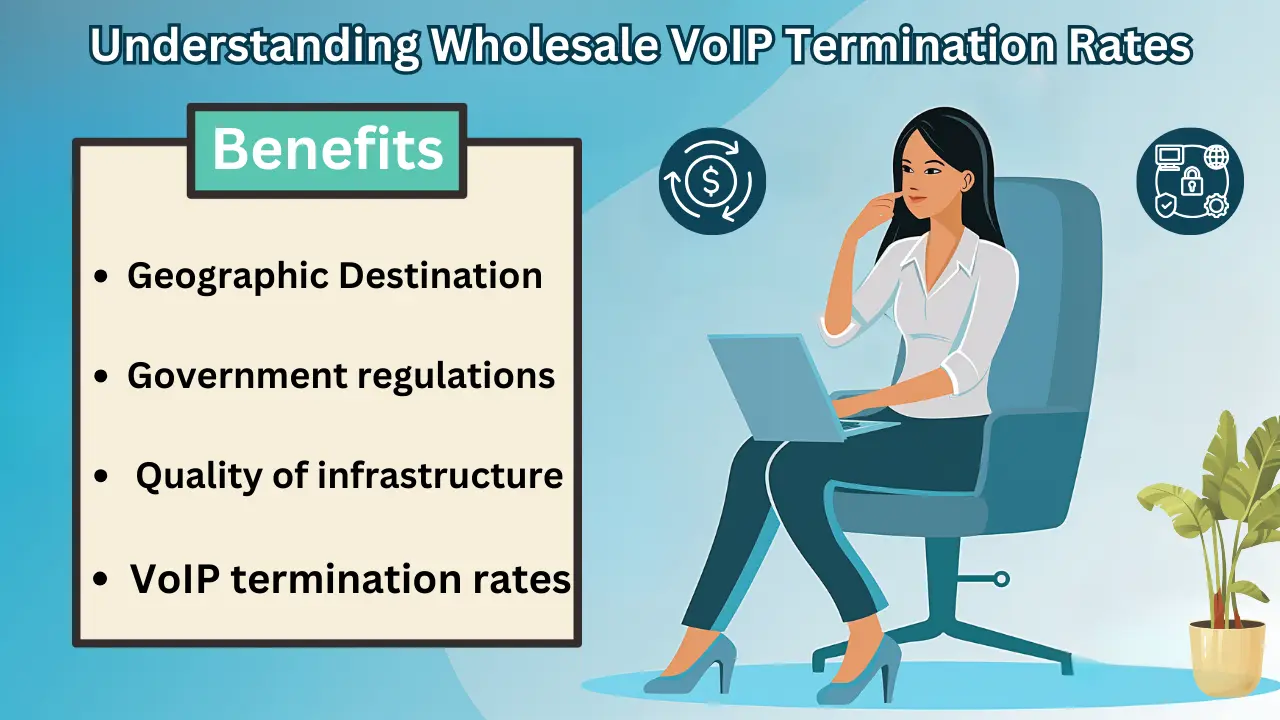 Call Termination Provider rates denote the per-minute cost that a VoIP provider assesses for routing voice calls to their final destination. These rates are pivotal in determining the overall communication expenses for businesses utilizing VoIP services. Providers strategically regulate these rates, which can vary depending on factors such as call volume, destination, and the requested service quality.
For any business, comprehending and managing termination rates is imperative for cost control and the efficient functioning of communication operations. A robust network infrastructure is crucial for effectively supporting VoIP services, as it directly influences call quality, dependability, and the overall user experience.
Call Termination Provider rates denote the per-minute cost that a VoIP provider assesses for routing voice calls to their final destination. These rates are pivotal in determining the overall communication expenses for businesses utilizing VoIP services. Providers strategically regulate these rates, which can vary depending on factors such as call volume, destination, and the requested service quality.
For any business, comprehending and managing termination rates is imperative for cost control and the efficient functioning of communication operations. A robust network infrastructure is crucial for effectively supporting VoIP services, as it directly influences call quality, dependability, and the overall user experience.
Geographic Destination
The geographical location where a call terminates has a significant impact on VoIP termination rates, as these rates vary based on the specific country or region. Factors such as the destination’s underlying infrastructure quality, local government regulations, and market demand all play a role in determining the costs. For example, countries with well-developed telecommunications networks may have lower termination rates compared to regions with limited infrastructure. When choosing a VoIP provider, it is essential to consider these geographical disparities in rates to enhance cost-efficiency and ensure reliable service delivery across diverse international locations.Call Quality
The quality of calls is a critical factor in VoIP services and is typically measured by metrics like latency, jitter, and packet loss. Latency, the delay between signal transmission and receipt, can cause an echo effect. Jitter, the inconsistency in packet arrival time, can cause fragmented conversations. Packet loss, the failure of data packets to reach their destination, can lead to distorted audio. Sustaining high call quality is fundamental for upholding professionalism, ensuring customer satisfaction, and facilitating efficient collaboration, as substandard quality can adversely impact a company’s reputation.Understanding Rate Sheets and Billing Models
 Rate sheets and billing models are critical for comprehending the cost structure of VoIP services. Rate sheets provide a detailed breakdown of charges, including per-minute call rates to various destinations, monthly fees, and costs for additional features. By thoroughly reviewing these rate sheets, a business can get a comprehensive understanding of the potential expenses.
Billing models determine how customers are charged for usage. For example, some providers adopt a pay-as-you-go model where users are billed based on their actual usage. In contrast, others offer subscription-based models with fixed monthly expenses for a certain capacity, irrespective of usage volume.
Rate sheets and billing models are critical for comprehending the cost structure of VoIP services. Rate sheets provide a detailed breakdown of charges, including per-minute call rates to various destinations, monthly fees, and costs for additional features. By thoroughly reviewing these rate sheets, a business can get a comprehensive understanding of the potential expenses.
Billing models determine how customers are charged for usage. For example, some providers adopt a pay-as-you-go model where users are billed based on their actual usage. In contrast, others offer subscription-based models with fixed monthly expenses for a certain capacity, irrespective of usage volume.
Choosing the Right VoIP Termination Provider
 The selection of an appropriate VoIP termination provider necessitates a careful evaluation of various factors, including service quality, network reliability, and the caliber of customer support offered. When assessing service quality, pertinent considerations include call clarity, connection stability, and overall network performance. A dependable provider ensures a consistent call connectivity experience with minimal interruptions.
Superior customer support can significantly impact the timely and efficient resolution of any encountered issues. In the quest for an optimal provider, it is advisable to prioritize those offering round-the-clock support, multiple communication channels, and a specialized customer service team. Additionally, prudent attention should be given to reviews and testimonials from past users to ascertain the provider’s reputation for delivering excellent service.
The selection of an appropriate VoIP termination provider necessitates a careful evaluation of various factors, including service quality, network reliability, and the caliber of customer support offered. When assessing service quality, pertinent considerations include call clarity, connection stability, and overall network performance. A dependable provider ensures a consistent call connectivity experience with minimal interruptions.
Superior customer support can significantly impact the timely and efficient resolution of any encountered issues. In the quest for an optimal provider, it is advisable to prioritize those offering round-the-clock support, multiple communication channels, and a specialized customer service team. Additionally, prudent attention should be given to reviews and testimonials from past users to ascertain the provider’s reputation for delivering excellent service.
Benefits of Wholesale VoIP Termination Rates
Bulk Virtual Numbers rates offer numerous high-level advantages to businesses, including notable cost savings, the ability to scale communication solutions, and enhanced operational efficiency. By leveraging these rates, businesses can realize reduced communication expenses by lowering their long-distance and international call costs. The scalability feature enables organizations to adapt their communication infrastructure easily to evolving requirements without incurring substantial additional capital expenses. Finally, operational efficiency is improved as VoIP helps streamline communication processes, facilitating smoother interactions and seamless collaboration among team members. These benefits not only result in financial savings but also elevate overall productivity levels and customer satisfaction.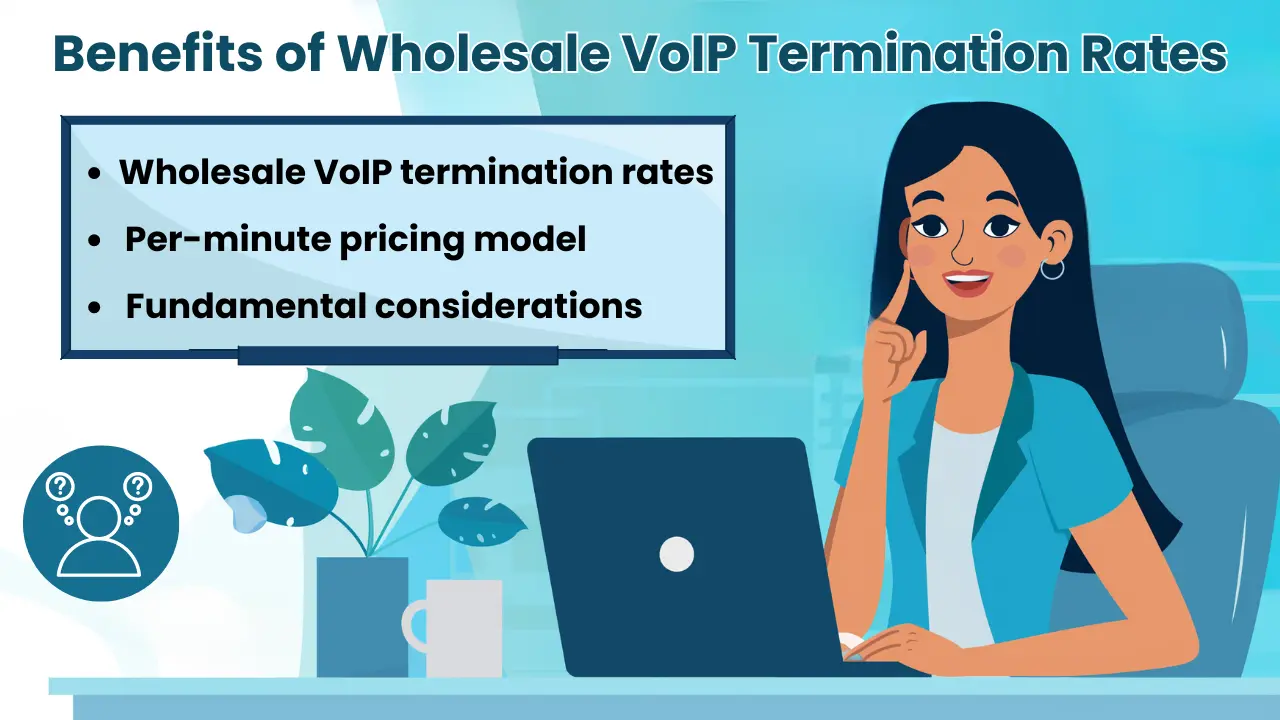
Security and Customer Support
Security and customer support are fundamental considerations in the realm of VoIP services. Encryption is a critical component in safeguarding communication data, as it guarantees the security and confidentiality of sensitive information shared during VoIP calls and prevents unauthorized access. A strong foundation of customer support is also essential for promptly resolving any technical concerns, thereby facilitating seamless and dependable communication for users. The integration of strong security protocols and robust customer service not only fortifies data protection but also enriches the user experience, cultivating trust and confidence in the VoIP service provider.Pricing Types
Understanding the various pricing structures in VoIP services is crucial for making informed and cost-effective decisions. Rate sheets are a common method providers use to bill customers based on specific call rates for different destinations, which can lead to fluctuating costs. Conversely, some billing models combine fixed monthly fees with usage-based charges, granting businesses more predictability. In contrast, flat-rate pricing entails a fixed monthly charge for unlimited calling to specific destinations, offering a straightforward choice for organizations with substantial and predictable call volumes.Per-Minute Pricing
Per-minute pricing offers businesses a structure based on the duration of each call, presenting a flexible option for managing communication costs. Under this model, businesses are charged solely for the time spent on calls, which enhances cost-efficiency by eliminating fixed rates for unused capacity. This approach enables companies to more effectively regulate expenses, particularly in sectors where call durations and volumes vary significantly.Per-Channel Pricing
The implementation of per-channel pricing enables businesses to pay a fixed rate for each concurrent communication channel employed, making it a suitable option for handling substantial and consistent traffic volumes. This pricing model offers a predictable cost structure based on the number of channels utilized. By adopting per-channel pricing, businesses can readily scale their communication capacity without encountering abrupt cost escalations, which promotes cost-effective resource allocation and simplifies budgetary planning.Benefits of Using Wholesale VoIP Termination Rates
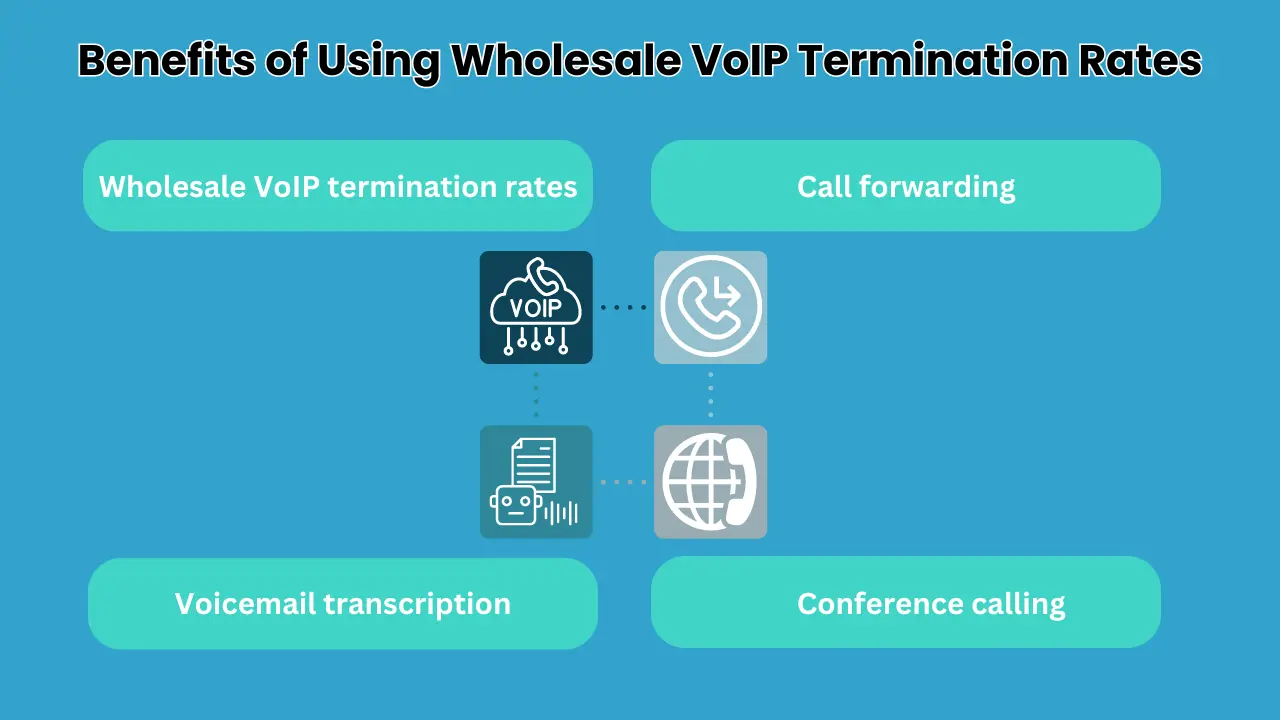 Beyond high-level cost savings, using Wholesale SIP Trunking rates provides direct technical and operational benefits by offering access to advanced provider tools and competitive global rate structures. This allows businesses to optimize their communication procedures and enhance day-to-day operational efficiency. The availability of a provider’s sophisticated routing platform and detailed analytics facilitates seamless interactions and boosts productivity. Moreover, access to competitive global rates enables companies to achieve substantial savings on international calls, making communication with partners and clients across the globe more cost-effective. This not only results in financial benefits but also creates opportunities for expanded global reach and collaboration.
Beyond high-level cost savings, using Wholesale SIP Trunking rates provides direct technical and operational benefits by offering access to advanced provider tools and competitive global rate structures. This allows businesses to optimize their communication procedures and enhance day-to-day operational efficiency. The availability of a provider’s sophisticated routing platform and detailed analytics facilitates seamless interactions and boosts productivity. Moreover, access to competitive global rates enables companies to achieve substantial savings on international calls, making communication with partners and clients across the globe more cost-effective. This not only results in financial benefits but also creates opportunities for expanded global reach and collaboration.
Conclusion
Based on the provided information, businesses can significantly enhance their communication cost efficiency by leveraging wholesale VoIP rates. By opting for wholesale voice termination, companies can access competitive pricing and scalable solutions that cater to varying communication needs. This approach not only reduces expenses associated with long-distance and international calls but also offers flexibility in adapting to changing operational demands without incurring additional overhead. Overall, wholesale VoIP rates represent a strategic opportunity for businesses to streamline communication expenses while maintaining high-quality service delivery across diverse geographic locations.FAQs
Wholesale VoIP rates are the per-minute or per-channel costs that a provider charges for routing voice calls to their final destination, typically sold in bulk to other service providers or large enterprises.
Rates can vary significantly based on the country or region of the call destination due to factors such as distance, infrastructure quality, government regulations, and market demand.
The primary factors are latency (delay), jitter (variation in delay), and packet loss (lost data). A high-quality provider minimizes these issues to ensure clear, uninterrupted audio.
Common models include per-minute pricing (pay-as-you-go based on call duration), per-channel pricing (a fixed fee for each concurrent call path), and flat-rate pricing for unlimited calling to specific areas.
The main benefits are significant cost savings on call termination, access to a global network for wide coverage, the ability to scale services easily without large capital investment, and access to high-quality, reliable routes.
Security is critical. It involves encrypting call data to ensure privacy and implementing measures to prevent toll fraud, which is the unauthorized use of your service that can lead to significant financial loss.

